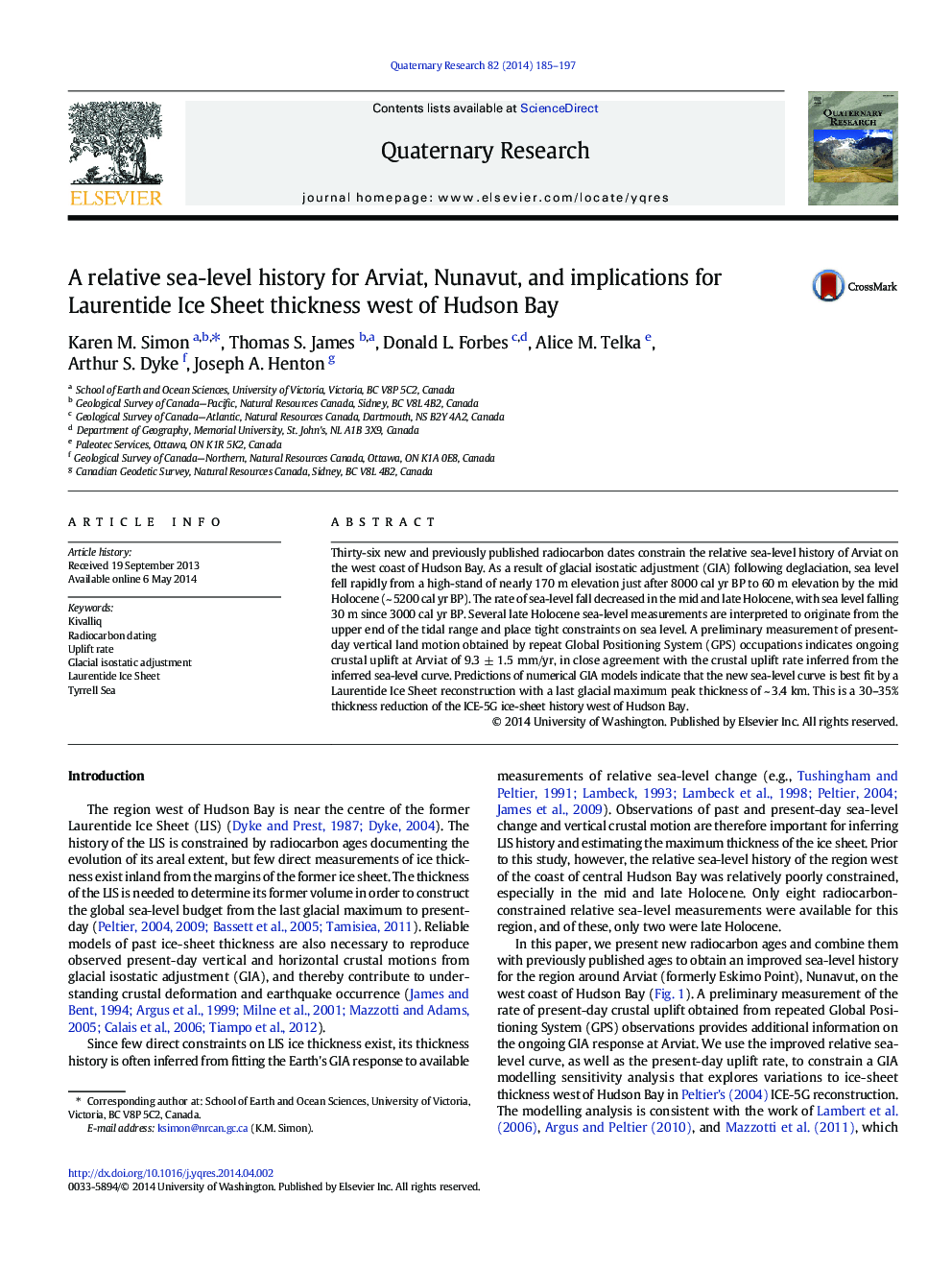| Article ID | Journal | Published Year | Pages | File Type |
|---|---|---|---|---|
| 1045327 | Quaternary Research | 2014 | 13 Pages |
Thirty-six new and previously published radiocarbon dates constrain the relative sea-level history of Arviat on the west coast of Hudson Bay. As a result of glacial isostatic adjustment (GIA) following deglaciation, sea level fell rapidly from a high-stand of nearly 170 m elevation just after 8000 cal yr BP to 60 m elevation by the mid Holocene (~ 5200 cal yr BP). The rate of sea-level fall decreased in the mid and late Holocene, with sea level falling 30 m since 3000 cal yr BP. Several late Holocene sea-level measurements are interpreted to originate from the upper end of the tidal range and place tight constraints on sea level. A preliminary measurement of present-day vertical land motion obtained by repeat Global Positioning System (GPS) occupations indicates ongoing crustal uplift at Arviat of 9.3 ± 1.5 mm/yr, in close agreement with the crustal uplift rate inferred from the inferred sea-level curve. Predictions of numerical GIA models indicate that the new sea-level curve is best fit by a Laurentide Ice Sheet reconstruction with a last glacial maximum peak thickness of ~ 3.4 km. This is a 30–35% thickness reduction of the ICE-5G ice-sheet history west of Hudson Bay.
